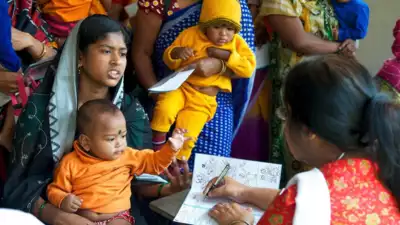Context:
The Swachh Bharat Mission (SBM) has contributed significantly to the reduction of infant and under-five mortality rates across country, saving an estimated 60,000 to 70,000 infant lives annually, according to a recent study published in Nature.
Key highlights of the study
- The study analyzed data from 35 Indian states and Union Territories and 640 districts spanning a decade (2011-2020), focusing on infant mortality rate (IMR) and under-five mortality rate (U5MR) per thousand live births as the primary outcomes.
- Inverse relation between Toilet Access and Child Mortality is a strong historical link between increased toilet access and reduced child mortality in India.
- Results from the analyses suggest that for every 10-percentage point increase in district level access to toilets following SBM corresponds with a reduction in district level IMR by 0.9 points and U5MR by 1.1 points on average.
- The district level toilet coverage of 30% (and above) corresponds with substantial reductions in infant and child mortality.
- The study revealed that districts with over 30% toilet coverage under SBM experienced reductions of 5.3 in the IMR and 6.8 in the U5MR per thousand live births.
- The study also highlights that expanded access to toilets under SBM likely reduced exposure to fecal-oral pathogens, contributing to lower incidences of diarrhea and malnutrition.
Infant mortality rate & Under-five mortality rate
- The infant mortality rate (IMR) in India refers to the number of deaths of infants under one year of age per 1,000 live births within a given year.
- The under-five mortality rate (U5MR) is a measure of the number of deaths of children under the age of five per 1,000 live births within a specific time period, typically a year.
National Family Health Survey 5 data:
- Infant mortality rate (per 1000 live births): 35.2
- Under-five mortality rate (per 1000 live births): 41.9
About Swachh Bharat Mission (SBM)
- The SBM-Urban, launched on October 2, 2014, aims to eliminate open defecation and achieve 100% scientific management of municipal solid waste in urban India, while the SBM-Grameen, also initiated in 2014, focuses on making India Open Defecation Free (ODF).
- It aimed at mass-scale behaviour change, construction of household-owned and community-owned toilets, their usage and Solid and Liquid waste management (SLWM) thereby establishing an accountable mechanism for achieving Open Defecation Free (ODF) Plus India.
- The urban component of the mission will be implemented by the Ministry of
- Housing and Urban Affairs and the rural component by the Ministry of Jal Shakti.
- Under Phase 1 of SBM, all Villages, States and Union Territories in India declared themselves “open-defecation free” (ODF) by 2nd October 2019, on the 150th birth anniversary of Mahatma Gandhi.
- The Second phase of SBM-U was launched on 1st October 2021, for a period of 5 years to achieve “Garbage-free” status for all cities by 2026.
- Phase II of SBM-G, launched post-2019, aims to sustain the ODF status and introduce comprehensive solid and liquid waste management across rural India to achieve Sampoorn Swachhata.
- Over 117 million toilets have been constructed since 2014 with a public investment of over 1.4 lakh crore.

